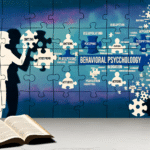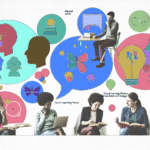
Introduction
Imagine a classroom where every student, irrespective of their unique challenges, has the chance to thrive. This vision of an inclusive learning environment can be made a reality through Individualized Education Programs (IEPs). Empowering students: how IEPs foster inclusive learning environments is not just a theoretical concept—it’s a practical approach that transforms educational experiences for many children with disabilities. As education evolves, it becomes increasingly important to ensure that every child has the necessary tools to succeed. This article delves into the impact of IEPs, exploring how they empower students, facilitate inclusivity, and share insights that can inspire change in educational practices globally.
Understanding IEPs
What is an IEP?
An Individualized Education Program (IEP) is a legally binding document that outlines the educational goals and services tailored to meet the unique needs of a student with a disability. IEPs are designed for students aged 3 to 21 in public schools and include specific details such as:
- Current performance levels
- Annual goals
- The services needed to achieve those goals
- Accommodations or modifications required
- Methods for evaluating progress
Legal Framework
The foundation of IEPs is rooted in the Individuals with Disabilities Education Act (IDEA), ensuring that children with disabilities receive a Free Appropriate Public Education (FAPE). IDEA emphasizes inclusivity, mandating that these students be educated in the Least Restrictive Environment (LRE), ideally alongside their peers without disabilities.
The Significance of IEPs in Inclusive Settings
Empowering Students Through Personalization
One of the core philosophies behind empowering students: how IEPs foster inclusive learning environments is the emphasis on personalization. Each IEP is crafted to reflect the individual needs of a student, enabling teachers to tailor their approach.
For instance, consider a student named Jake, diagnosed with dyslexia. Jake’s IEP outlines that he will receive specialized reading instruction and access to audiobooks. With personalized support, Jake progresses significantly in his reading abilities, gaining confidence and motivation. This example underscores the critical role IEPs play in fostering environments where all students feel valued and capable.
Building Self-Advocacy Skills
IEPs not only focus on academic achievements but also emphasize life skills, including self-advocacy. By actively involving students in the process, they learn to express their needs and preferences. Strategies like goal-setting sessions allow students to identify their strengths and areas for improvement.
For example, Laura, a high school student with ADHD, participates in her IEP meetings. She articulates her challenges and suggests solutions that work for her. This process empowers Laura to take ownership of her education and prepares her for life beyond school.
The Role of Collaboration in IEPs
Engaging Teams for Success
Collaboration is crucial in creating successful IEPs. Parents, teachers, special educators, and sometimes even the student work together to devise a comprehensive plan that benefits everyone involved. This teamwork not only enhances the IEP’s effectiveness but also fosters a strong support system for the student.
Case Study: The Thompson Family
The Thompson family had a son, Max, who struggled with autism. His IEP was developed collaboratively, with input from his parents, his special education teacher, and the speech therapist. Each stakeholder provided insights into Max’s needs, allowing for a well-rounded plan. The result? Max showed remarkable improvements in both communication and social skills, exemplifying how collaboration can cultivate an inclusive environment.
Teacher Training and Support
To effectively implement IEPs, educators must receive proper training and ongoing support. Professional development opportunities help teachers understand the legal obligations, learn about various disabilities, and develop effective teaching strategies to meet diverse needs.
Data-Driven Decisions
IEPs emphasize the need for ongoing assessment. Teachers collect data to track student progress, adjusting strategies as necessary. This data-informed approach ensures students receive the support they need throughout their educational journey.
Incorporating Technology
Technology plays a significant role in supporting IEPs. Assistive technology tools like text-to-speech software, speech recognition apps, and customized learning platforms can be integrated into the educational experience. These resources extend learning opportunities for students and contribute to a more inclusive environment.
Challenges in Implementing IEPs
Navigating Bureaucracy
Although IEPs are designed to empower students, the bureaucratic nature of the education system can present challenges. Limited resources, lack of awareness, and administrative hurdles can hinder the effective implementation of IEPs.
Training Gaps
Training gaps for educators can lead to difficulties in developing and implementing IEPs. Without comprehensive training, teachers may struggle to adapt their teaching methods to meet diverse needs.
Limited Parental Involvement
Parents play a crucial role in the IEP process, but their involvement can vary greatly. Factors like work commitments or lack of awareness of their rights may limit parental engagement, making it vital for schools to foster strong partnerships with families.
Cultural Sensitivity
Diversity in cultural perspectives can influence perceptions of disabilities and educational practices. Educators must be culturally responsive, recognizing that families may have different beliefs about education and inclusivity.
Effective Strategies for Creating Inclusive Learning Environments
Empowering Students: How IEPs Foster Inclusive Learning Environments
Frequent Communication: Establish open channels of communication between all stakeholders, ensuring everyone is informed and engaged in the IEP process.
Foster Collaboration: Create opportunities for teamwork among teachers, parents, and specialists to develop a well-rounded IEP.
Promote Flexibility: Encourage adaptability in teaching methods to respond to students’ unique needs effectively.
Continual Training: Offer regular professional development opportunities for educators to stay abreast of best practices in special education.
Encourage Parental Engagement: Implement strategies that actively involve parents in the IEP process, empowering them as advocates for their children.
- Utilize Technology: Incorporate assistive technology to effectively support students’ learning styles and capabilities.
Creating a Positive Classroom Culture
Cultivating a positive classroom culture is essential for fostering an inclusive environment. When students feel safe, respected, and valued, they are more likely to thrive academically and socially.
- Encourage Peer Support: Implement activities that promote peer mentoring, allowing students to learn from and support one another.
- Celebrate Diversity: Create a curriculum that reflects diverse perspectives and contributions, enabling students to connect with the material.
Conclusion
Empowering students: how IEPs foster inclusive learning environments transcends the confines of legal compliance; it is an ethos that champions each student’s right to a meaningful education. By embracing the principles of collaboration, personalization, and inclusivity, we can build educational environments where every child has the opportunity to succeed.
Encouragingly, progress is being made, but there is still much work to be done. As educators, parents, and community members, it is our responsibility to advocate for inclusive practices that empower all students. By sharing insights, collaborating, and breaking down barriers, we can create a brighter future for students with disabilities, fostering an educational landscape where everyone truly belongs.
FAQs: Empowering Students Through IEPs
1. What is the purpose of an IEP?
An IEP aims to provide tailored educational services to students with disabilities, ensuring they receive a Free Appropriate Public Education (FAPE) and are supported in a Least Restrictive Environment (LRE).
2. Who develops an IEP?
An IEP is created by a team that includes educators, special education professionals, parents or guardians, and the student (when applicable). Their collective input is vital to develop a balanced and effective plan.
3. How often should an IEP be reviewed?
IEPs should be reviewed at least once a year to assess progress and make necessary adjustments. However, parents or teachers can request more frequent evaluations if needed.
4. Can students with IEPs participate in general education classes?
Yes! Many students with IEPs can and do participate in general education classes, often with accommodations or modifications in place to support their learning.
5. What are some common accommodations provided in IEPs?
Accommodations can vary widely but may include extra time on tests, preferential seating, the use of assistive technology, or modified assignments tailored to the student’s needs.
As we move towards a more inclusive future in education, remember that each IEP represents a unique pathway for a child to achieve their full potential. Let’s work together to ensure these pathways are navigated skillfully and compassionately.














